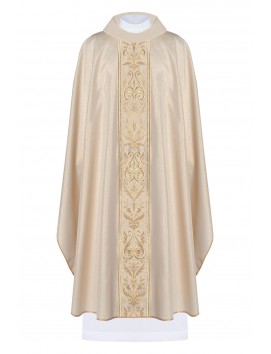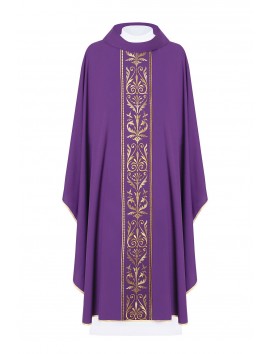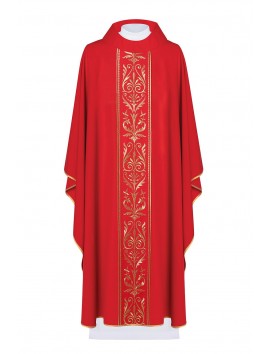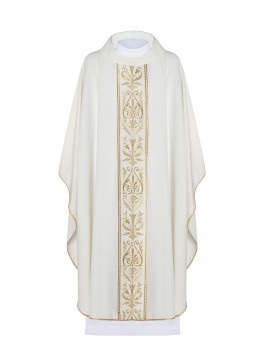A clerical vestment, also known as a cassock, is a traditional garment worn by members of the clergy in many different religious traditions. The robe typically consists of a long black robe with a white clerical collar. The specific design and color of the cassock may vary depending on the denomination and the occasion.
In general, the vestment is intended to represent several things. Foremost, it is a symbol of the clergy's dedication to their religious vocation and a reminder of their responsibility to serve as spiritual leaders and guides for their congregations. The black color of the robe is often associated with humility, modesty and mourning, while the white collar represents purity and holiness.
The clerical vestment also serves a practical purpose, providing a distinctive and recognizable uniform for members of the clergy. This can help to identify them as religious leaders and create a sense of authority and respect within their communities.

What color is a pastors robe?
The color of a pastor's robe may vary according to denomination and occasion. In general, a pastor's robe can be black, white, or a color appropriate to the liturgical season or occasion.
Black is the most common color for a minister's robe and is often worn for regular Sunday services and funerals. It is also seen as a sign of humility and solemnity.
White is typically worn at Christmas, Easter and other special occasions such as weddings and baptisms. It represents purity, holiness and joy.
Colors appropriate to the liturgical season include
- Purple or violet for Advent and Lent, which represent penitence and preparation.
- Red for Pentecost, representing the Holy Spirit and the fire of God.
- Green for Ordinary Time, representing growth and new life in Christ.
- Gold for special festivals and celebrations, representing the glory of God.
What does a black robe symbolize in the Bible?
In the Bible, the color black is often associated with mourning, repentance and humility. Therefore, a black robe worn by pastors or members of the clergy can also symbolize these things.
Specifically, the black robe represents humility and solemnity, reminding the wearer and the congregation of their mortality and the need for repentance and forgiveness. It is also a symbol of mourning and grief, often worn at funerals or times of great sorrow.
The black robe can also represent the darkness of sin and the need for salvation through faith in God. It is a reminder that all have sinned and fallen short of the glory of God, and that only through repentance and faith in Christ can one be saved.
Ultimately, the symbolism of the black robe in the Bible is meant to encourage humility, repentance and faith in God, and to remind us of our need for salvation through Christ.
Why are clergy robes black?
Clergy robes are often black because black is a symbol of humility, solemnity, and mourning in many cultures, including Christian culture. The color black is also practical for clergy because it is easy to care for and does not stain or wrinkle easily.
In addition to the symbolic and practical reasons, the use of black robes by the clergy has historical roots. In the early days of the Church, clergy often wore plain, undecorated robes of black or other dark colors as a sign of their devotion to God and their rejection of worldly possessions. Over time, the use of black robes became more widespread, especially in the Catholic and Anglican churches, and was eventually adopted by other Christian denominations.
Today, the black robe is considered a standard part of the clergy's uniform in many churches, and is often worn during worship services, funerals, and other formal occasions. However, the use of black robes is not universal, and some clergy may choose to wear other colors.
Why do pastors wear vestments?
Pastors wear vestments for a variety of reasons, including to signify their role and authority within the church, to enhance the worship experience, and to reflect the liturgical season or occasion.
One of the primary reasons pastors wear vestments is to signify their role as spiritual leaders within the church. Vestments provide a visual cue to the congregation that the pastor is fulfilling a specific role and that his words and actions are to be taken seriously.
Vestments can also enhance the worship experience by adding a sense of reverence and solemnity to the service. The use of specific colors and designs can help convey the themes and messages of the liturgy, and can also serve to unify the congregation in its worship.
In addition, vestments are often worn to reflect the liturgical season or occasion. For example, during Advent and Lent, pastors may wear purple vestments to reflect the penitential nature of these seasons. During Easter and other celebrations, pastors may wear white vestments to symbolize joy and new life.




















